Welcome
Welcome to Sycamore Hill Gardens, the home of George and Karen Hanford and originally a fully functioning dairy farm with over 300 head of Jersey cattle. Sycamore Hill Gardens is now nearly 40 acres of diverse trees, shrubs, perennials, and spring flowering bulbs. The gardens are divided into a variety of distinct areas and include Asian and European statuary as well as koi ponds, stonework, a formal garden, a hedge maze and several large open spaces with expansive views. We have planted the majority of our remaining farmland with over 10,000 native trees, 10,000 native shrubs, and 180 acres of grassland to create wildlife habitat. This turned close to 300 acres of our former cropland into one of New York State’s largest Conservation Reserve Program sites and is hopefully helping honeybees as well as our native bee population.
We design, plant, and maintain the gardens ourselves, with the very welcomed help of family, friends, and community neighbors. Currently, we rely on the amazing efforts one full time person, and any part timers and volunteers who come our way.
In The Beginning . . . The 1970s . . .
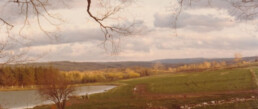
In 1971, back from Fort Hood Texas, we settled into our new Marcellus home. Early on, we picked the name, Sycamore Hill Farm. The centuries old tree, center of the original 99 acre homestead, dominated the landscape and became our Eiffel Tower.
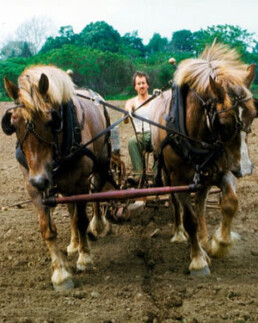
In the beginning, Sycamore Hill Gardens was a hobby farm. The barn was full of a variety of livestock, including chickens, cats, dogs, draft horses, sheep, bunnies and piglets. The house had old single pane glass and no insulation. We did our cooking on an original Glenwood stove and it heated half the house. Frost formed on the insides of the windows but, since we had no television and never ending projects, we were working too hard to care.
By the end of the decade, we’d made the switch to Jersey cows, our farm losing some of its diversity of livestock and our home filling up with kids and dogs. All required attention twenty-four hours a day, seven days a week, 365 days a year. Any gardening involved vegetables and our primary interest in trees was tapping the old maples for sap to boil down on the wood stove so we could have syrup for all those little pancakes.
The 1980s . . .
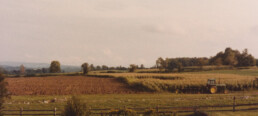
Eventually, we did find time to plant a few fruit trees and some daffodil bulbs, but that remained the pinnacle of our gardening efforts for many years. In the fields where our garden now grows, corn, hay, and heifers reigned supreme. We devoted our older barns to raising young stock and moved our milking herd across the road into the large hipped roof barn that still stands as a landmark and icon of past dairy practices. It’s tall upright silos, enormous hay mow, and individual tie stalls for each animal represent a way of life that has increasingly lost viability a world where milk is just another commodity. Very few of these massive barns still stand in Onondaga County and we now feel the same sense of stewardship for it as we do for our gardens and our farm fields. But, in the 1980s, our efforts centered around managing crops and cattle to maximize our milk check and keep the bills paid.
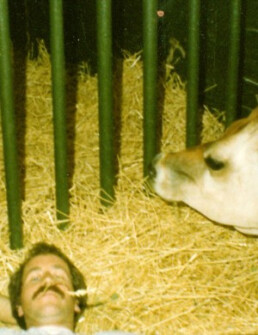
The 1990s . . .
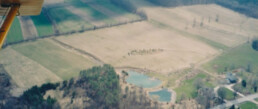
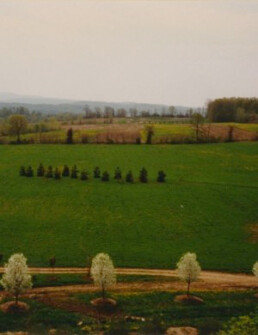
The 1990s began with our first true garden project, a planting done on Mother’s Day to disguise a new leach field. Gold Flame Spirea, a few cotoneasters, a lot of shoveling, and presto, a pile of dirt turned into a garden, of sorts. Father’s Day brought the happy addition of our first Japanese Maple. We were off and running. When improvements around the pond left us less than satisfied, we went to Marcellus Nursery to buy locally grown plant material and made friends in the process. Soon we were joining owners Ted and Nan Stetler in their far flung searches for rare tree, shrub, and perennial specimens. They taught us the nursery business from the ground up and continue to mentor and guide us to this day.
The 1990s were a time of great change for the garden. Or, rather, for the fields and pastures which once surrounded our home. The time for the rigors of farming over, we entered into the rigors of gardening. It was a time of vision, of planting, and of learning.
The 2000s . . .
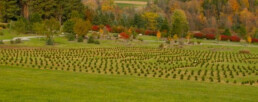
The 2000s brought their own challenges. Our children grown, we had more time to devote to the garden than ever. Our lessons learned, we also had more of a grasp on what projects to pursue. With the millennium came a change in focus. The days of expanding the garden were over, and the time for perfecting it (a never ending quest) had begun. Our focus shifted to moving and culling plants, as well as to statuary, roads and hard scaping. These elements are what truly transform a space, and the diligence put into planning and creating them is not as subject to the whims of harsh Upstate New York winters.
That said, this was also the time in which we added the Hedge Maze, planted in 2002. Having learned our lesson in previous years, the maze, which is made up of 2,200 arborvitaes, was accompanied by several hundred extra plants, in case replacements were needed. In the winter, a solar powered fence keeps deer out of the maze, minimizing loss.
The 2000s also brought attempts to discover how best to share our garden, resulting in the happy relationship we now have with several nonprofit organizations around the Central New York area.
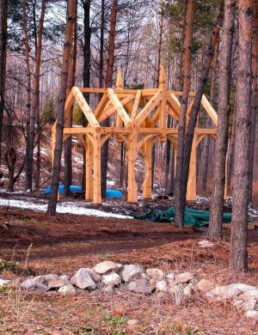
The 2010s . . .
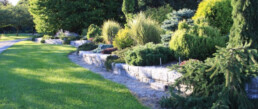
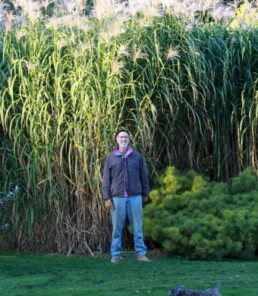
We now spend our time in stewardship of the garden, adding to it with a level of care learned through many years of work. Never ones to sit still, we’ve also added a bird sanctuary and pollinator habitat to the property, planting over 10,000 indigenous trees and shrubs, as well as acres of wildflower and native grass meadows.
